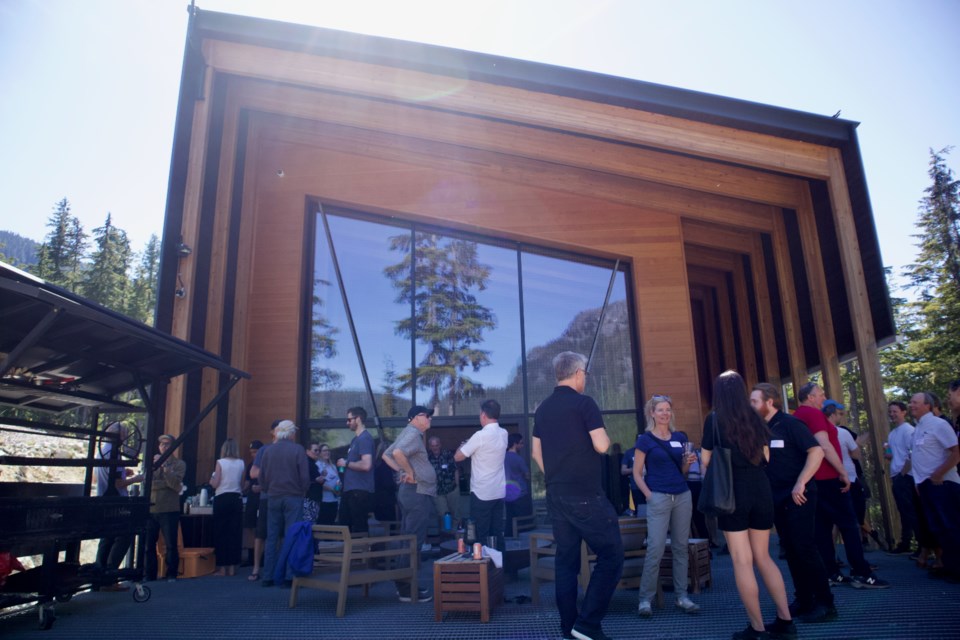Peter Dickson has owned FraserWood Industries, a Squamish-based timber manufacturer, since 1998. For more than two decades, he has grown his business, earning contracts near and far, including the Sea to Sky Gondola service building and log cabins at Walt Disney World. One third of his business is exported to the United States, and U.S.-Canadian tariffs would have a significant impact on his company.
Dickson was preparing for a flight to Amsterdam to purchase a piece of machinery when Pique reached him by phone, and he said it’s an investment choice he’s now questioning.
“Everything is in flux," he said. "We have sizable U.S. contracts and are hoping we can manage our way through those. The biggest problem is our American customers will be reluctant to sign moving forward with the uncertainty."
While Dickson can do his best to minimize their fears, he said he can’t give them any great satisfaction.
“What businesses want, and need, is guidelines to work within,” he said.
Those guidelines have become muddled since U.S. President Donald Trump took over the Oval Office.
Trump initially threatened a 25-per-cent tariff on Canadian goods that was set to go into effect Feb. 4, and Canada was prepared to retaliate. The tariffs were paused for 30 days in last-minute negotiations Feb. 3. Days later, Trump announced a tariff on steel and aluminum that would go into effect March 12.
David Girard sits on the government relations committee for the Sea to Sky Canadian Home Builders Association, and he said the tariffs would have an outsized impact on consumers and demand for Canadian products, and cause reduced employment.
“In Canada, we spend $3 billion annually on household appliances. The price of those appliances is going to go up," Girard said. "Tile and textiles from the U.S. are going to go up, too.”
The cost for steel reinforcements, aluminum in HVAC equipment and electrical components would increase.
“I think we will see a similar issue to during COVID-19—a supply chain disruption that hasn’t been fully resolved will resurface,” Girard said.
Changing supply chains
In addition to exporting stateside, Dickson also imports products that either stay in Canada or head back south. At the beginning of February, he experienced his first taste of the back-and-forth, tit-for-tat tariffs.
“Wood products were one of the first things the Canadian government put a tariff on and then removed hours later. We had a really good day,” he said sarcastically. “Twenty-five per cent on southbound and 25 per cent on northbound products. It has huge impacts.”
According to a recent survey by audit, tax and advisory firm KPMG, 48 per cent of Canadian companies contacted said they would invest or produce in the U.S. to retain American customers and reduce costs. But for FraserWood, that’s not an option.
“We’re not big enough. [But] we will continue to do business in the States even with the tariffs. We don’t want to walk away from that market," Dickson said. "Our margins will be tighter, and it will take away our ability to grow. I don’t think we’re looking at layoffs at this point, but it’s hard to know.”
As for the machine he’s considering purchasing, Dickson may go ahead with it since it will help produce materials domestically.
“This machine will replace buying products out of the States; we will do more in house manufacturing,” he said. “If this was a machine I needed to grow, I wouldn’t be flying to Amsterdam right now.”
While the tariff threat looms, Dickson does wonder what it will do to political will for domestic manufacturing.
“We have plenty of wood in B.C., the question is whether we’re willing to invest in the technology to refine and add value,” he said.
Matteo Dürfeld, owner of Dürfeld Constructors and CEO of Pemberton-based BC Passive House, said the impact of tariffs on his companies is mixed. Dürfeld doesn’t export to the U.S., but BC Passive House does.
“Our client in the U.S. is nervous as they will potentially be hit. We aren’t in a position to give them a discount,” he said.
Other materials Dürfeld uses come from a complex web of suppliers, meaning he doesn’t know exactly what would be impacted, and he doesn’t know how fast suppliers could move to domestic production.
“We’re nervous because we don’t know what to expect, but something is going to change," he said. "I think people relying on American markets would look to Asia or Europe. But it’s not an easy transition, we’re seamless with the States. Vancouver is a stone’s throw from the U.S. The Canadian Wood Council and BC Wood will likely manoeuvre to look at China, India, Japan and Europe.”
Both Dürfeld and Dickson said the impact would be felt most from people looking to build houses, with discretionary spending on second homes likely declining.
“It’s too early in the game to see a reaction from buyers, it wouldn’t surprise me if we did. We’re in projects for a while and it takes time to see a ripple effect," Dürfeld said. "Once a tariff comes in and people get a sense of the price, second homes are expendable income. If you put anything on hold, it’s your ski cabin build or renovation."




